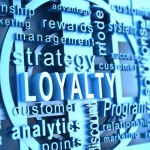Heading into the busiest shopping season, Apple, Amazon, and Samsung have a lot to celebrate as they’ve recently been ranked among the top of the world’s brand loyalty leaders.
 These companies – and the others that are ranked highly – all have one thing in common: their brands connect emotionally with their customers, and they consistently surpass consumer expectations, according to a recent survey by Brand Keys, a brand loyalty research firm.
These companies – and the others that are ranked highly – all have one thing in common: their brands connect emotionally with their customers, and they consistently surpass consumer expectations, according to a recent survey by Brand Keys, a brand loyalty research firm.
“Brand loyalty has always been primarily driven by emotional engagement, and the rankings this year make it crystal clear that connection is everything,” notes Robert Passikoff, Brand Keys founder and president.
“The good news is that brand loyalty is understandable,” he notes. “The better news is, it can be quantified and predicted, and . . . knowing what’s coming down the road gives a brand an extraordinarily powerful advantage.”
Retailers – both bricks and clicks – were down nearly a third in this year’s survey, making it even more important that they successfully engage with their customers to boost the appeal of their brands.
“We believe that the inability for retailers to provide meaningful differentiation – beyond low-lower-lowest pricing strategies – has seriously eroded loyalty levels in the retail category,” says Passikoff.
Big data and data analysis provide completely new opportunities for gathering information about customers and markets and using that goldmine of insight to up sales, he adds.
According to Hinshaw, some of the brand loyalty benefits from using big data to glean customer insights include:
- Companies can anticipate customers’ needs
- Firms can alter operations to save customers time and money
- Retailers can provide better products
- Companies can identify what new products will gain customer attention
- Businesses can identify opportunities for innovation earlier
- Firms can predict potential threats from competitive offerings
“With the ability to leverage massive amounts of complex customer data well within the reach of any firm, there is no excuse not to intelligently use this data to inform strategy and decisions,” says Hinshaw. “Even so, many established firms have not leveraged technology or shifted their organizational structures or processes to allow the intelligent use of customer insights.”
This may be because companies now have more power than ever to observe customer interactions throughout the sales process, according to a Forbes blog post. As a result, many firms are simply overwhelmed with multiple disparate data sets.
“To avoid this data overload, smart companies begin by mapping out their customer process and identifying ‘key customer touch points,’” Forbes advises. “When your analytics team has the discipline to organize data and reports around key customer touch points (rather than technology platforms) you will develop a holistic, single view of your customers and how they interact with you in a multi-platform world.”
Next Steps:
- Subscribe to our blog to stay up to date on the latest insights and trends in data analysis and big data.
- To hear how organizations that have adopted in-memory computing can analyze larger amounts of data in less time – and much faster – than their competitors, watch our on-demand webcast, “In-Memory Computing: Lifting the Burden of Big Data,” presented by Nathaniel Rowe, Research Analyst, Aberdeen Group and Michael O’Connell, PhD, Sr. Director, Analytics, TIBCO Spotfire.
- Download a copy of the Aberdeen In-Memory Big Data whitepaper here.





